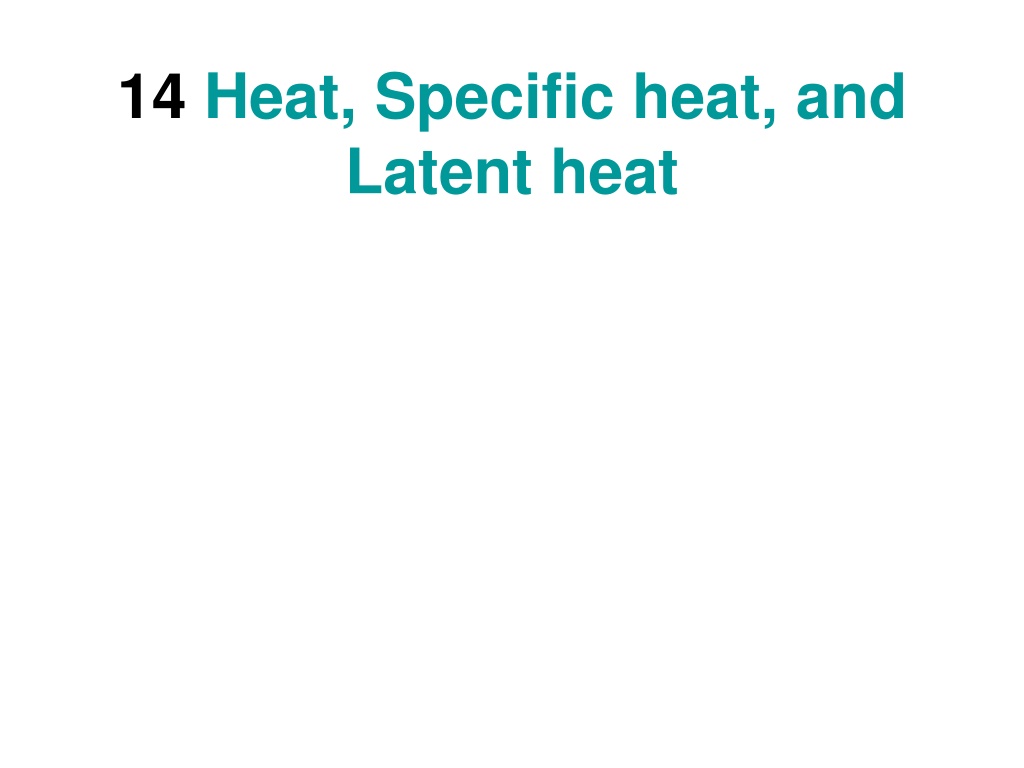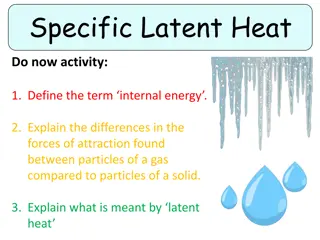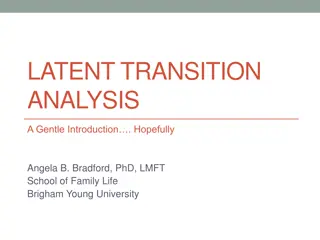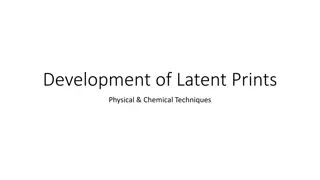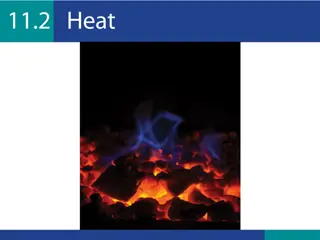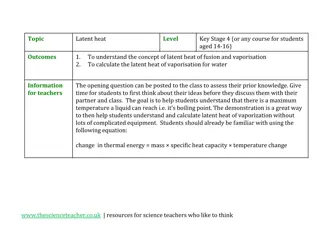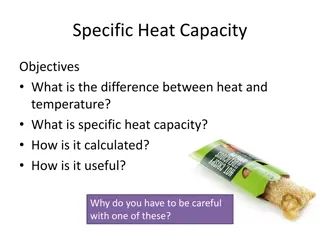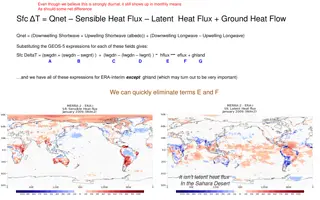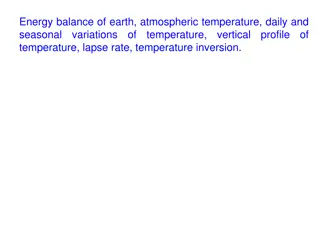Understanding Heat, Specific Heat, and Latent Heat
Heat is energy transferred between objects due to temperature difference. Specific heat capacity measures the amount of heat needed to change the temperature of a substance. Latent heat is the energy required for a phase change without a temperature change. Calorimetry and measuring specific heat are essential techniques in understanding heat transfer.
Download Presentation

Please find below an Image/Link to download the presentation.
The content on the website is provided AS IS for your information and personal use only. It may not be sold, licensed, or shared on other websites without obtaining consent from the author. Download presentation by click this link. If you encounter any issues during the download, it is possible that the publisher has removed the file from their server.
E N D
Presentation Transcript
14 Heat, Specific heat, and Latent heat
Heat Heat is energy that flows from a higher-temperature object to a lower-temperature object because of the difference in temperatures. SI Unit of Heat: joule (J).
Units SI unit for heat is the joule, J. Calorie is another unit for heat. It comes with a lower case and an upper case. Nutritionists use the word Calorie, with a capital C, to specify the energy content of foods. For example, a regular 12-oz can of soda has about 140 Calories. The cgs unit of heat is the calorie, with a lower case. One calorie (1 cal) is defined as the amount of heat needed to raise the temperature of one gram of water by one Celsius degree. 1 food Calorie = 1000 calories = 1 kcal 1 calorie = 4.186 J. British thermal unit, Btu. 1 Btu = 1055 J.
14.2 Specific Heat Capacity The heat Q that must be supplied or removed to change the temperature of a substance of mass m by an amount T is, where c is the specific heat capacity of the substance. Unit for Specific Heat Capacity: SI: J/(kg C ) cgs: cal/(g. C )
Substance Specific Heat Capacity, c, J/(kg C )b Solids Aluminum Copper Glass (common) Human body (37 C, average) Ice (-15 C) Iron or steel Lead Silver Liquids Benzene Ethyl alcohol Glycerin 9.00 102 387 840 3500 2.00 103 452 128 235 1740 2450 2410
Calorimetry An experimental technique in heat that uses the conservation of energy principles. In calorimetry some things will loose heat and others will gain heat. According to the conservation of energy, Heat loss = Heat gain
Measuring the Specific Heat Capacity A calorimeter cup is made from 0.15 kg of aluminum and contains 0.20 kg of water. Initially, the water and the cup have a common temperature of 18.0 C. A 0.040-kg mass of unknown material is heated in boiling water (100.0 C) and then added to the water. The temperature of the water, the cup, and the unknown material is 22.0 C after thermal equilibrium is re-established. Ignoring the heat loss to the environment and the thermometer, find the specific heat capacity of the unknown material.
14.3 Heat and Phase Change: Latent Heat The three phases of water: ice is floating in liquid water while (invisible) water vapor is present in the air.
Phase Changes Example of sublimation: Solid carbon dioxide (CO2), dry ice gaseous CO2
Table 14.2 Heats of Fusion and Vaporization
Example 14.4 Cooling Soda with Ice Cubes: Three ice cubes are used to chill a soda of mass 0.25 kg, at 20 C. The ice is at 0 C and each ice cube has a mass of 6.0 g. Assume that the soda is kept in a foam container so that heat loss can be ignored. Assume the soda has the same heat capacity as water. Find the final temperature when all ice has melted.
phase-change material (PCM) This highly magnified image shows a fabric that has been coated with microscopic balls of heat-resistant plastic. The balls contain a substance known as a phase-change material, the melting and freezing of which absorbs and releases heat. Clothing made from such fabrics can automatically adjust itself in reaction to your body heat and help maintain a constant temperature next to your skin.
